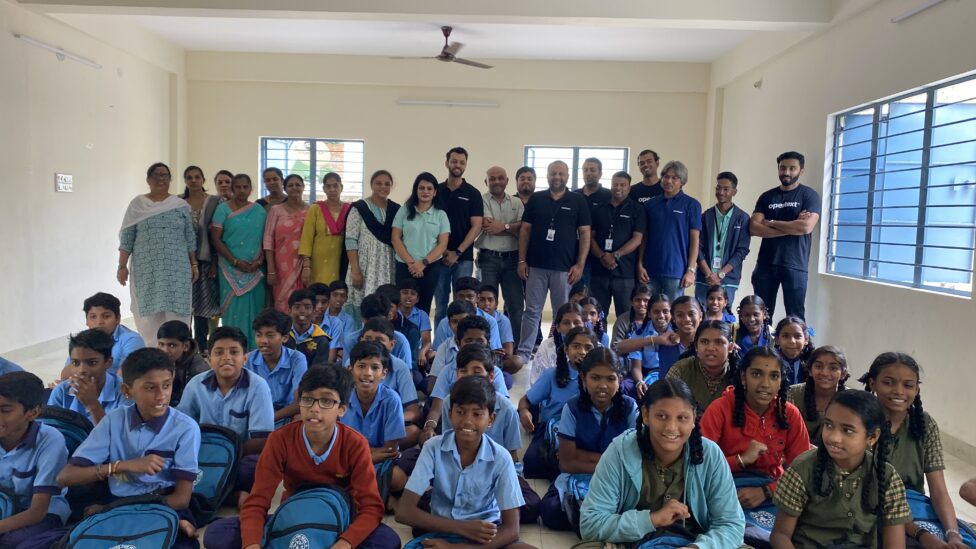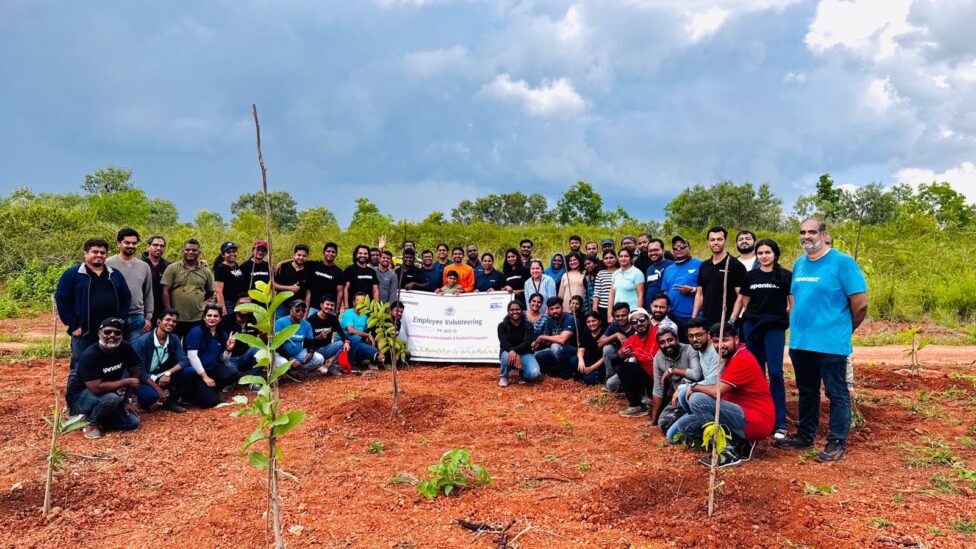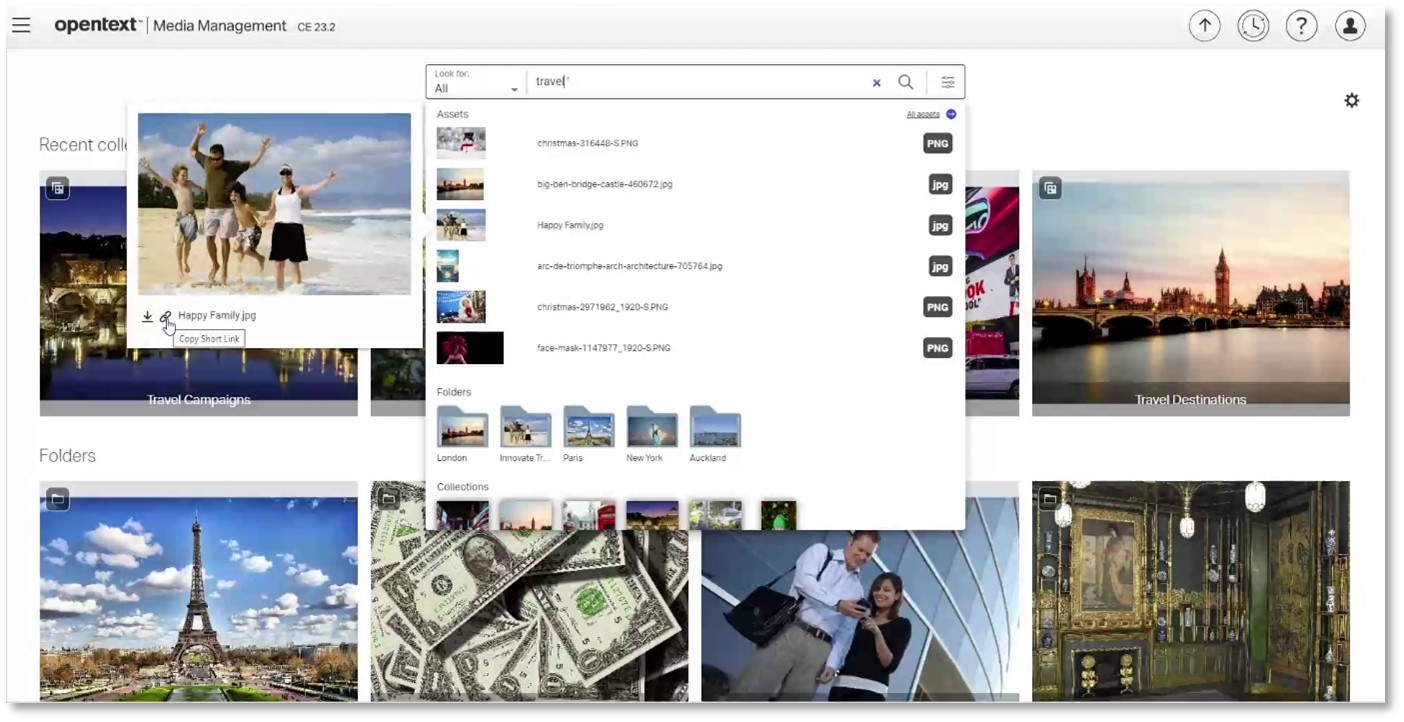At OpenText, we believe in taking steps to support a more sustainable and fair future. Our employees are at the heart of this effort, dedicating their time and energy to making a lasting impact in their communities. Whether volunteering their time with the help of three paid volunteer days each year or fundraising for global causes, OpenTexters across the globe are committed to creating positive change. At OpenText we call this: #OT4Good.
In this blog post, we shine a spotlight on the employee-led initiatives in Bengaluru, India, that are helping to drive progress in education and climate action.
Spreading Joy with Every Kit
In July 2024, the OpenText Bengaluru office partnered with Youth for Seva, a nation-wide movement that inspires youth to volunteer and drive positive change. OpenText sponsored approximately 950 school kits, each containing essentials like backpacks, books, and stationary products. High school kits also included a geometry box, while nursery kits featured colored pencils in addition to their books.
Our employee volunteers helped assemble and distribute the kits across four schools in Bengaluru city.
“It was an incredible opportunity to volunteer with Youth for Seva. Our team felt a great sense of fulfillment and joy knowing that we could make a difference in the lives of so many youth and children that will hopefully have a lasting impact and inspire them to give back to society as they grow up and accomplish great things.” – Moby

Stationery Drive with Samarthanam Trust for the Disabled
As the school year began in Bengaluru, our volunteers organized a drive to collect unused stationery materials, gently used clothing and toys for families in need. They then visited Samarthanam Trust for the Disabled to distribute the donations and spend time with the children.
“Our collective efforts have reached the hearts of 350 children at Samarthanam Trust. The entire OpenText Bengaluru family united to contribute and deliver over 23 cartons filled with stationery, toys, and clothes. The meaningful impact we’ve made fills us with immense pride and gratitude. This experience reminds us of the transformative power of kindness and teamwork.” – Amudha

Tree Planting Drive
In October, OpenText India partnered with United Way of Bengaluru for a tree planting drive as part of the Sidlaghatta Social Forestry project, located in the outskirts of the city.
Sixty passionate OpenText volunteers gathered to dig the pits, add manure, and carefully plant and water each sapling, resulting in 200 saplings successfully planted that day!

This project was chosen by our team to fulfill a long-term vision: reforesting 100 acres of land while supporting local families through future fruit sales. This initiative will help restore green cover and strengthen the livelihoods of nearby villages.
“Sustainability reflects the core values of responsibility and innovation that we embrace at OpenText. It’s fulfilling to be part of an organization that prioritizes creating a positive environmental impact.” – Gaurav
“I chose to participate in the event because I deeply believe that each of us has a role to play in protecting and preserving the environment. Taking small, proactive steps today can lead to a more sustainable future. Beyond the cause itself, the event also offered a unique chance to interact with my colleagues in a more relaxed and meaningful setting, strengthening our sense of community and shared purpose.” – Pushpanjali
At OpenText, our employees recognize the importance of giving back to the communities where they live and work. Over the past months, the OpenText team in Bengaluru focused their impact on quality education, aiding the well-being of underprivileged students, and supporting the environment around us. If you want to learn more about life at OpenText, visit our careers page at careers.opentext.com.











